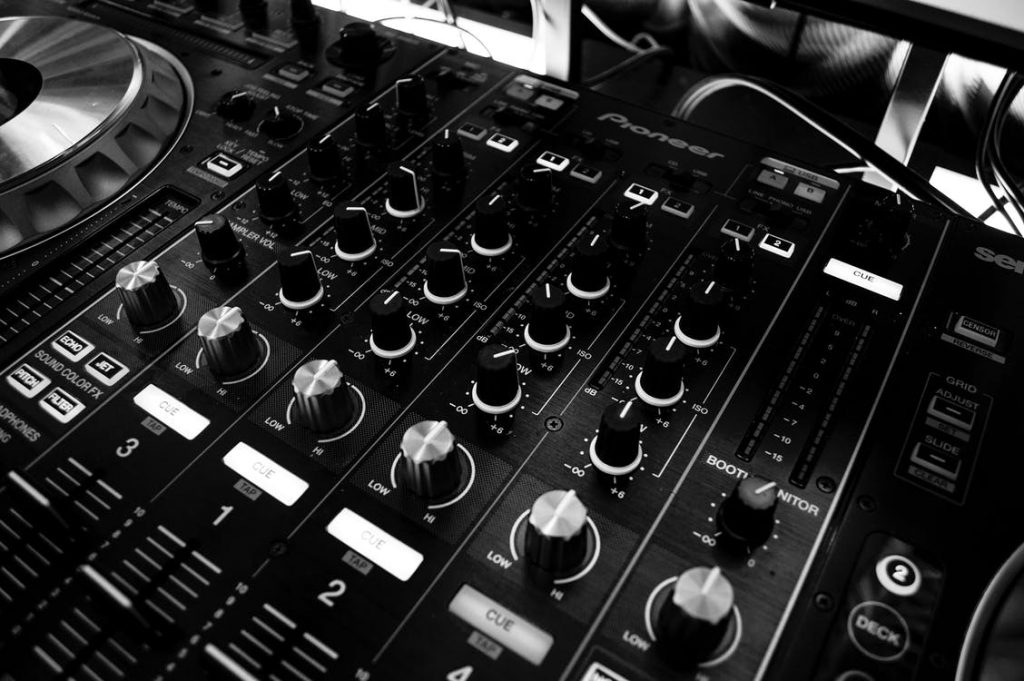Dolby Atmos VS DTS:X
Dolby Atmos VS DTS:X

Oh boy it’s showdown time; it’s Dolby Atmos VS DTS:X. I never would have dreamed that there would one day be something to supersede traditional surround sound, but hey, here we are.
Then again, these companies do have a long competitive history so I shouldn’t be too surprised.
I’ve personally experienced both of these wonderful formats, so I want to first give you a little background on them before I share my take on if one was better than the other.
More importantly, this might help with deciding whether or not it’s time to upgrade.
So with that said, let’s get to it!
History Dolby Atmos
What Is Dolby Atmos, and Why Was It Introduced?
What Do You need for it?
History Of DTS:X
What Do You Need For It?
Which Is Better?
Final Thoughts
History Dolby Atmos
Dolby Atmos started out as a format strictly for theaters, since consumers didn’t have commercial access to it. With it still being worked on, and in its’ infancy, Dolby Laboratories (its creator) wanted to drum up excitement surrounding the new technology. The first movie given the greenlight to actually utilize it was in 2012; that movie being Brave (great film by the way)
This wasn’t a mass release either, since only about 25 theaters total had it. But this tactic certainly worked because not even a year later, that number dramatically increased to about 300. By this time, the hype was real.
Everyone started singing its praises in regards to how it would revolutionize not only theater, but eventually home theater as well. Then sure enough in 2014, it was announced that it would soon be making its way to home theaters.
From there it was a runaway success, with about 2100 theaters sporting it in the beginning of 2015, and it then becoming commercially available a short time after.
What Is Dolby Atmos, and Why Was It Introduced?

But the real question is, what exactly is it, and why was it introduced? Well the answer to that actually stems from the limitations of current surround sound. Typically, when a sound engineer has to develop a mix for content, they’re tasked with making sure that the audio pans from each channel seamlessly. To do this, they use what are known as faders.
Just think of those as individual volume controls for each speaker. The problem with this is that it can take a lot of time and effort to pull off, and if they’re not skilled, it can be really easy to mess up. If the panning effects are not properly in phase, then the illusion of an moving object is lost; not too dissimilar to the subject of timbre matching.
If mismatching speakers from different manufacturers are used, then what happens? The immersion of surround sound is lost due to the different sound signatures, so it’s a similar principle. This is where Atmos comes in.
Atmos is revolutionary in that it’s object based. Rather than simply manipulating the sound to go through a specific channel, they’re able to take that individual object making the sound, through a 3D space as if it were real.
They’re able to do this for every object travelling in any direction. If it isn’t sinking in how groundbreaking that is, let me put it to you this way in the form of a question.
What’s the highest channel sound you’ve ever watched a movie in? 7.2, 9.2, hey maybe even 11.2?
How was it, probably incredible right?
Well Dolby Atmos absolves the idea of channels all together, at least in the digital sense.
That technically means it’s capable of producing audio that comes from anywhere. Yes anywhere.
Now when it’s raining in a scene, each raindrop would be treated as an object travelling through a 3D space hitting the floor.
If someone in a movie throws something, that object would act as though it were really flying through the air. You get the idea. It makes things feel super real, and incredibly immersive.
The particularly interesting part is that this doesn’t just apply to movies either, as the Playstation 5 and Xbox Series X & S actually support it in some of their games as well. This even makes gaming feel like something entirely different and exciting.
What Do You need for it?
So all of that sounds great, but do you need anything special for it?
Well yes and no. The interesting thing is there’s 2 ways to actually implement Dolby Atmos in your own home.
The first way is through height and ceiling speakers.
Height speakers, like their name would suggest, are specially designed speakers that are meant to be placed up high so that they can direct their sounds overhead.
Typically for the full experience, you would want 4 of these up above, angled slightly downwards towards the listening area. This would help to better disperse the audio.
Ceiling speakers are also like their name suggests, designed to be placed on, or even inside the ceiling.
https://easyhometheater.net/the-best-ceiling-speakers
Now obviously you could probably see the issue with this. Chances are the average person likely won’t want to run wires through their ceiling unless they were truly serious about their audio.
Realizing this, Dolby managed to come up with a more user friendly option; modules!
These modules are smaller angled speakers that can be placed on top of your current speakers.
From there, their unique design allows them to project the audio upwards at your ceiling, thus reflecting it back to your listening position. It’s a way to get the same effect, but in a much more streamlined way.
Some speakers even have drivers built into the top of them so you don’t even need those. How convenient is that?
Do keep in mind though that you’ll need a receiver that states its capable, but that’s not hard to find since most modern ones do.
History Of DTS:X
DTS:X on the other hand, got its start as an inspiration of the competing platform Atmos. Being that their biggest competitor is Dolby Digital, they weren’t about to allow their rival to upstage them.
In 2015, Digital Theater Systems (DTS) stated that they would also be introducing their own object based sound format called DTS:X.
By the end of the year, 350 already supported it. It was based off of the same premise, providing an impeccable sense of realism through 3D audio.
Support for it was nearly immediate as well, with receivers and game consoles alike announcing their endorsement behind it.
What Do You Need For It?
DTS:X works much less the same in terms of the things you’ll need and such. You have the choice of using height speakers, or the small modules since they typically include cross support for both formats.
Obviously, you’ll also need the receiver that mentions it can do this a well; along with HDMI cables and a Blu-Ray player. Besides that, there’s nothing else special that you need for it honestly.
Which Is Better?

Now here’s what you’re really wondering, and it’s probably the reason you clicked on this article, which one is better? Well I’ll give you the on-paper answer, then the personal experience-real world answer.
So on paper, while being extremely similar, there are 2 key advantages the offering from Digital Sound Labs has over Dolby Digital’s Atmos; the first being customization. DTS:X allows you to customize any portion of the sound at any given time.
Say for example, you’re watching a movie and the character’s voices seem low in comparison with everything else. What you can do in this instance, is raise the dialogue above the sound effects so that it’s more audible.
This level of customization in combination with a receiver’s EQ settings would provide for a big sense of personalization.
The other benefit has to do with mixing.
With Atmos, an engineer is required to create separate sound mixes for the same content in a movie theater that’s also released for the consumer commercially.
With DTS:X however, they’re able to create one universal mix across the board.
This not only cuts down on costs, but also saves a lot of time and effort. This makes it an enticing choice for content creators to work with.
But in regards to what I noticed when I first tried the two, honestly, besides the excellent customization that DTS:X offered, I didn’t particularly notice any profound differences.
Now mind you, even though the ability to have that level of control was nice, when talking about the actual sound of the two formats, they were virtually the same.
Be it movies, games, etc, that sentiment remained. I do personally think that’s a good thing though, because at least if a certain piece of content only supported one or the other, you really wouldn’t be missing out on anything either way in my opinion.
Final Thoughts
So when it comes down to Dolby Atmos VS DTS:X in terms of which is better, the latter offers a considerable amount of tweaking, but equals it in auditory performance.
Overall though, they’re both revolutionary platforms, and really something you need to experience for yourself to truly appreciate. I’d highly recommend them.
Once you do, you might not want to go back.
If you don’t have the equipment to support it currently, then I’d say don’t worry about it, and upgrade when you can. Just know that it’ll be a completely different experience with the content that supports when you do.
Luckily, most receivers today support those formats, so that won’t be a big deal either.
Long story short, chances are you’ll be blown away when you experience true 3D audio for the first time. It’s really amazing.

Hey everyone it’s nice to meet you. I’m Jay, writer & founder of the site Easy Home Theater. I’ve been with the hobby of home entertainment for many years now. I decided to create this site to be a helpful resource, and share everything that I’ve learned from personal experience with you. I also happen to be a huge gamer, lover of all things tech related, and a major fitness buff (love weightlifting)
https://Facebook.com/easyhometheater
https://Twitter.com/easyhometheater
https://www.Pinterest.com/easyhometheater/
https://www.instagram.com/easyhometheater/
12 Comments so far:
Haha oh man. Hey at least look on the bright side, once you do, it’ll be something you can enjoy for many years at least.
Some really powerful information on this post a lot of which I had no clue about so thank you for writing such a great article and giving value to the reader
No problem! That’s what I was aiming for.
We considered installing a soundbar to enhance our TV’s sound but after reading your review we fancy producing a cinema surround sound for our movie nights. Personally I thing the Dolby Atmos would suit us due to being less prone to tweaking, we’ve become more lazy and wish for automatic convenience to be honest. Thanks for your review, you’ve certainly inspired us,
Simon.I hear you on that one, sometimes you just want things to work. Glad that you liked it.
Hi Jay,
Thank you for your review on Dolby Atmos VS DTS X and I now know what ‘Atomos’ does – It takes all objects and emits a real life sound in 3D as though you were there?
That is insane lol. Amazing though and it can be applied to Xboxes etc as well, My son would go nuts for this. You seem to know a lot of about the more technical aspects of surround sound, of which, I have learned a little and ready to impress the next person who brings it up 🙂 .
This product is one that has to be got for the home to drown out the days worries after work, with your feet up beside a roaring fire, with your loved ones – I will give it thought and will be back soon.
Regards,
Philip.
Yup that’s exactly it, it’s incredible. But haha that’s so awesome man, yeah your son would be blown away with how immersive it makes games. Let me know what you think though. 🙂
This is some awesome information. I had no clue about Dolby Atmos. I have certainly learned a lot form reading your article. My husband is into technology. I will be sharing this with him. Thank you!
Awesome, glad you liked it.
This is very informative for people who are clueless about surround sound and the quality of it. Good work on guiding the way!
Thank you!






Ok, my wife has been on me for years to improve the sound system in our home and the surround sound system for our tv. I think it’s about time I jump into this. Thank you for getting me motivated.